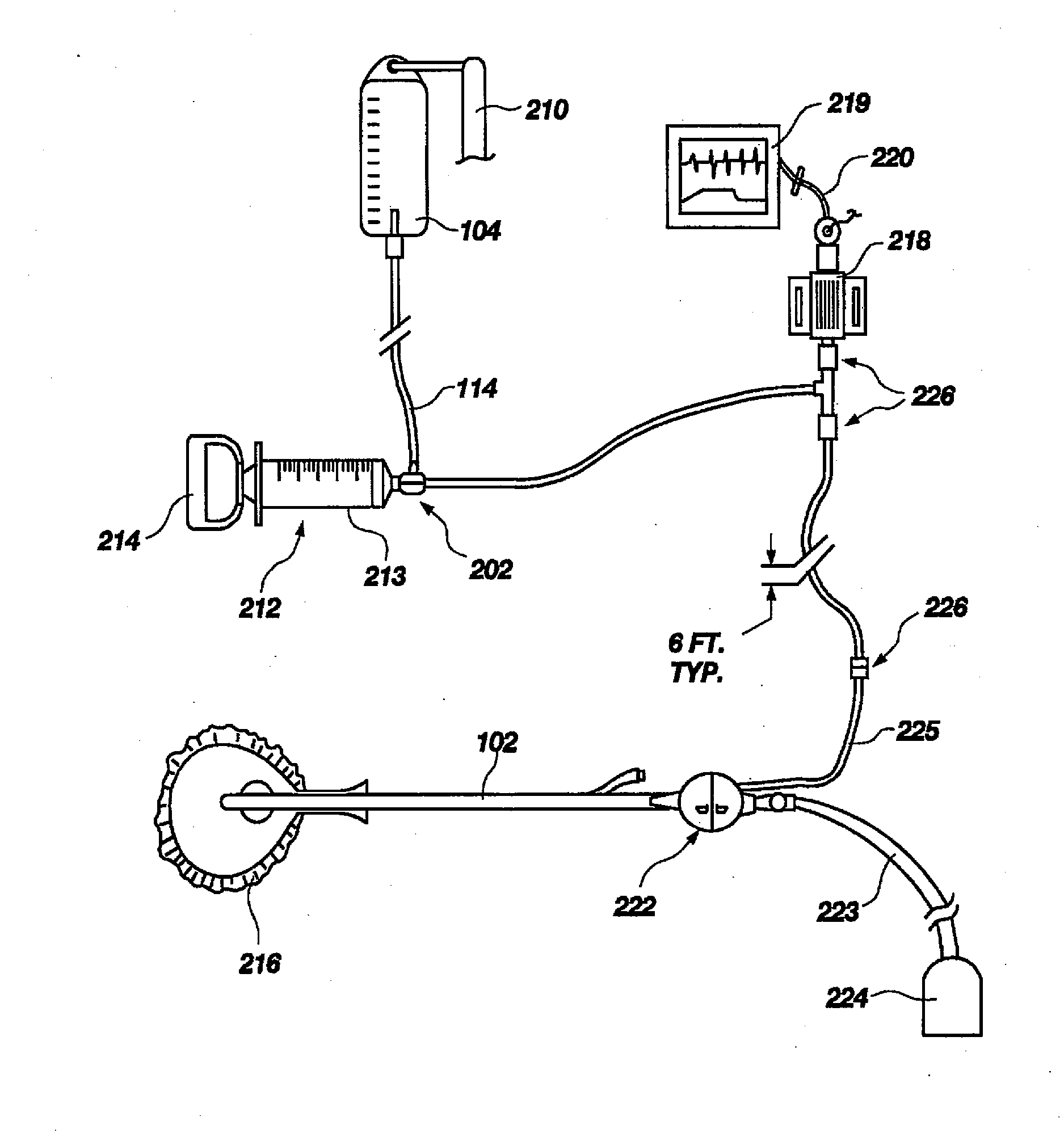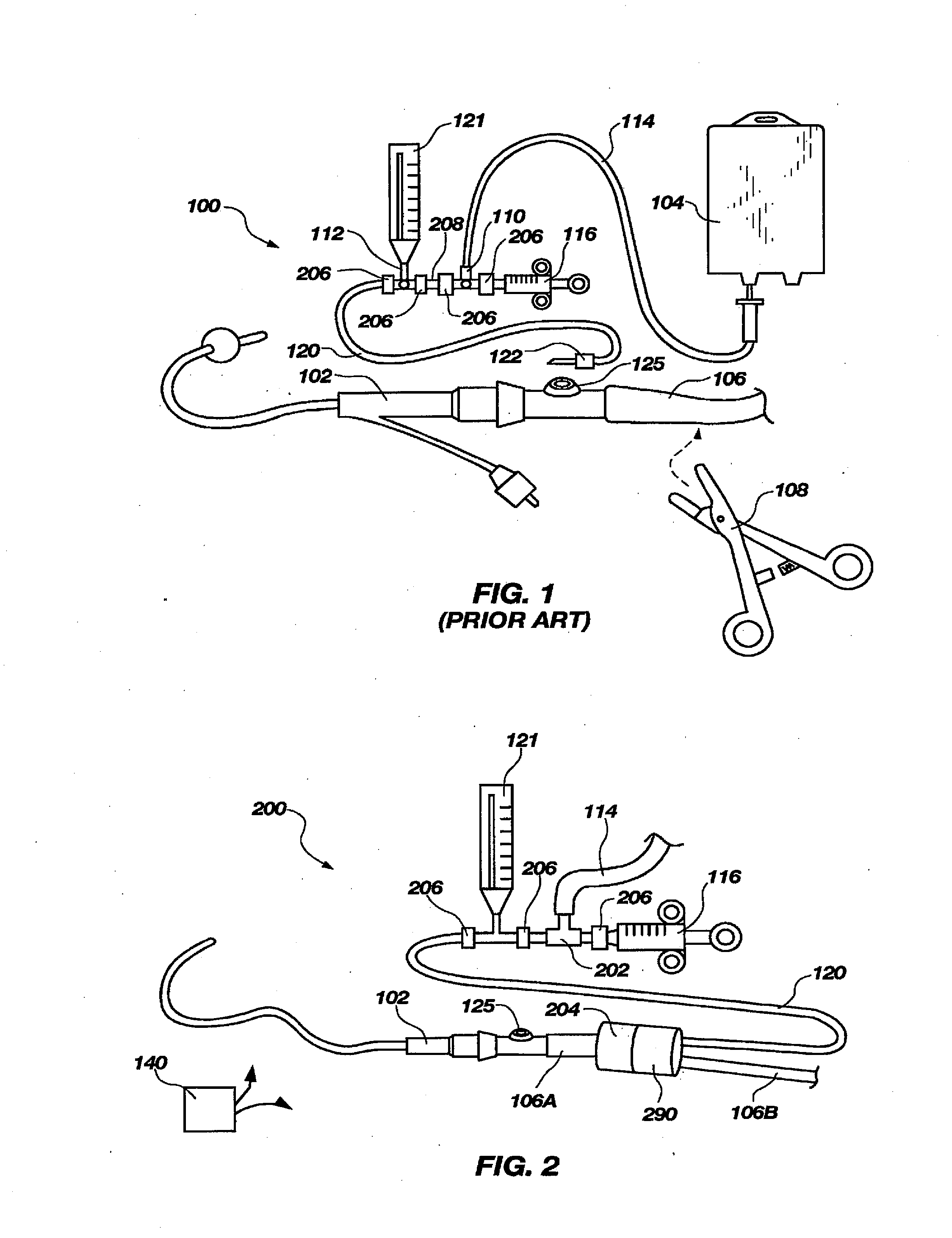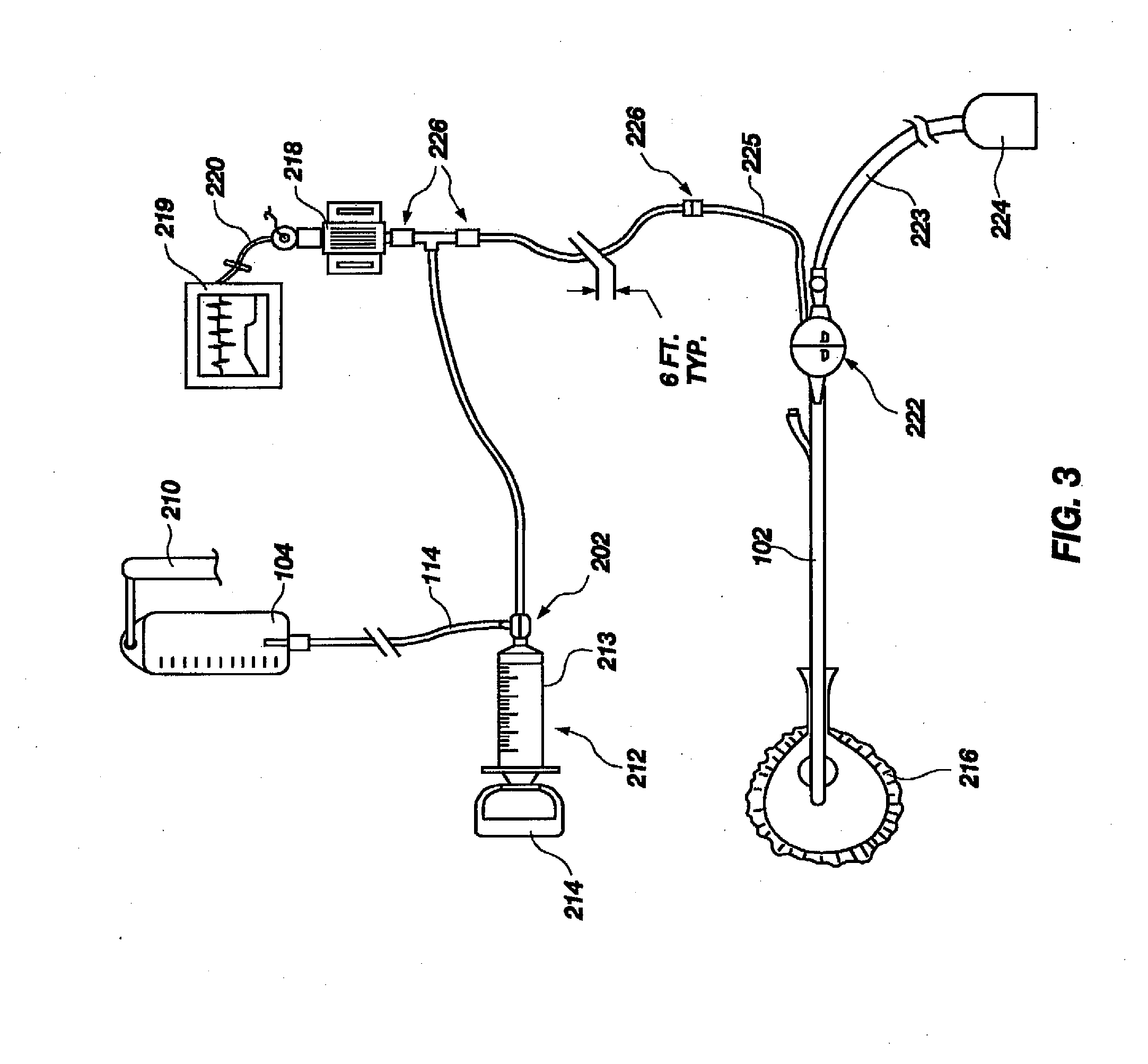Apparatus for monitoring intra-abdominal pressure
a technology for intra-abdominal pressure and abdominal cavity, applied in the field of abdominal cavity monitoring apparatus, can solve the problems of organ damage and patient death, tissue edema in the body, increased risk of infection for both patient and health practitioner, etc., and achieve the effect of improving speed
- Summary
- Abstract
- Description
- Claims
- Application Information
AI Technical Summary
Benefits of technology
Problems solved by technology
Method used
Image
Examples
second embodiment
[0092]FIGS. 12 through 15 illustrate a valve, generally indicated at 330, that is configured to provide a streamlined plumbing arrangement to enhance routing of conduits between a patient's legs. Valves 300 and 330 are both of the type that may be characterized as transversely actuated gate valves, with a principal difference being the arrangement of gripping structure to actuate the valve gate 304. Valve 330 has gripping structure 332 arranged to provide a transversely oriented shelf 333. FIGS. 12 through 15 illustrate valve 330 oriented with gate 304 located at an outboard position to align urine port 310 for fluid communication with fluid supply port 320.
[0093]FIG. 13 illustrates one arrangement operable to resist fluid leaks from the fluid flow paths through the valve 330. Grooves 334 and 336 receive O-rings that are adapted to bear against surface 338 of gate 304 (see FIG. 15). It is alternatively within contemplation to form a raised lip about respective openings of lumens thr...
third embodiment
[0097]FIGS. 16 through 19 illustrate a valve, generally indicated at 350, that is configured to provide a streamlined plumbing arrangement to enhance routing of conduits between a patient's legs. Valve 350 is of the type that may be characterized as a rotary actuated gate valve. Valve 350 includes a valve body 352, a rotary gate 354, and a valve cover 356. Body 352 carries grooves 358 and 360 that may hold O-rings, or may provide clearance to promote sealing of lips 362 and 364 against gate surface 366.
[0098]A change in selected flow paths through the illustrated valve 350 is effected by an approximately 90 degree rotation of gate 354 relative to valve body 352. A lever 368 is trapped within arcuate slot 370 during assembly of the valve 350, and is operable to rotate gate 354 to a desired position to permit fluid communication between urine conduit 372 and either of fluid supply port 374 or urine drain 376. Assembly of valve 350 typically is accomplished by ultrasonic welding cover ...
PUM
 Login to View More
Login to View More Abstract
Description
Claims
Application Information
 Login to View More
Login to View More - R&D
- Intellectual Property
- Life Sciences
- Materials
- Tech Scout
- Unparalleled Data Quality
- Higher Quality Content
- 60% Fewer Hallucinations
Browse by: Latest US Patents, China's latest patents, Technical Efficacy Thesaurus, Application Domain, Technology Topic, Popular Technical Reports.
© 2025 PatSnap. All rights reserved.Legal|Privacy policy|Modern Slavery Act Transparency Statement|Sitemap|About US| Contact US: help@patsnap.com



